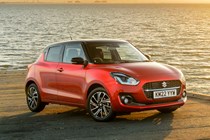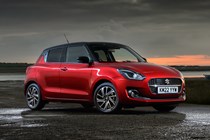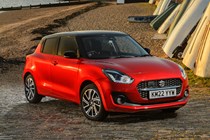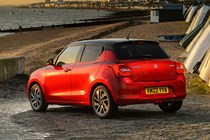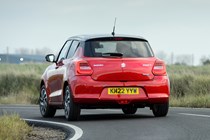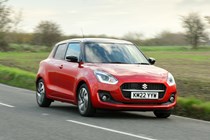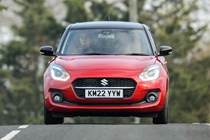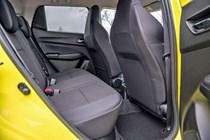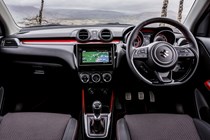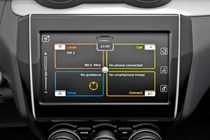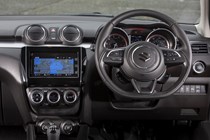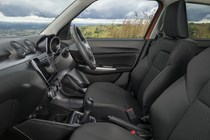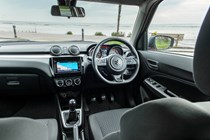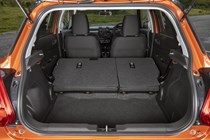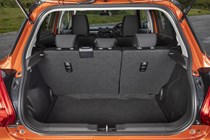
Suzuki Swift Hatchback running costs and reliability
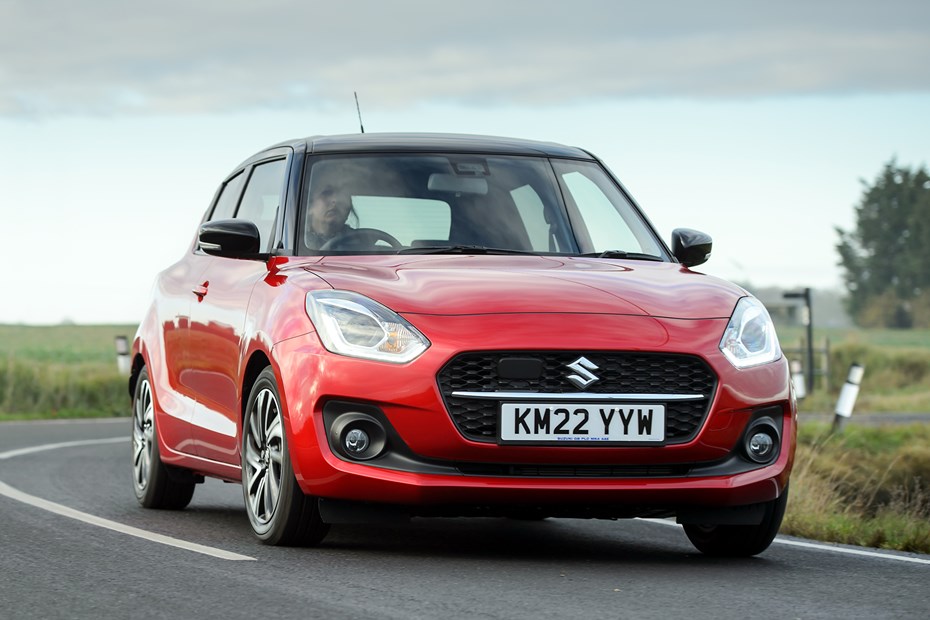
Miles per pound (mpp) ⓘ
| Petrol engines | 6.8 - 8.1 mpp |
|---|---|
| Hybrid petrol engines | 7.3 - 8.8 mpp |
Fuel economy ⓘ
| Petrol engines | 46.3 - 55.4 mpg |
|---|---|
| Hybrid petrol engines | 49.7 - 59.7 mpg |
- Dualjet Hybrid your only engine choice
- All Swifts sip petrol economically
- Suzuki servicing and maintenance is highly competitive
What are the running costs?
The Suzuki Swift should be a very economical car to own. It’s affordable to insure, steadfastly fuel efficient and cheap to maintain, thanks to a range of competitive servicing packages from Suzuki’s dealer network.
Thanks to the Swift’s lightness, we also expect consumables such as tyres and brakes will need replacing less frequently, which promises to save you more money. Just temper that expectation with the knowledge that the Swift is a fun car to drive enthusiastically – and belting down B-roads often will reduce the longevity of these items.
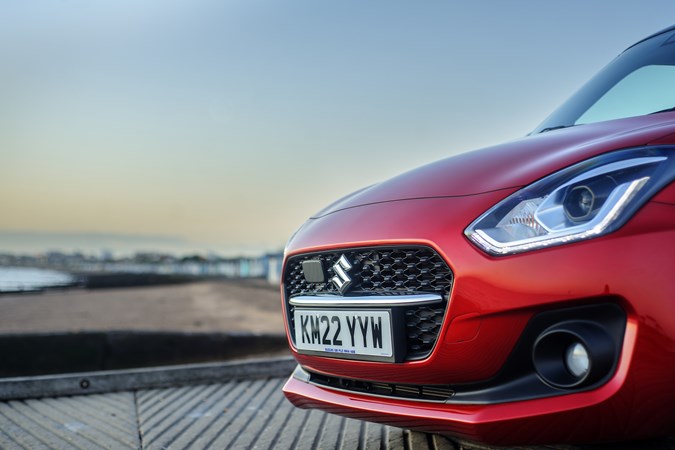
According to WLTP testing, the 1.2-litre mild hybrid Swift can achieve up to 59.7mpg. During our long-term test of the Swift with the now defunct non-hybrid 1.2-litre engine, we averaged 50mpg with a driving schedule that included plenty of motorway miles. As such, we reckon 55mpg should be easily achievable with the hybrid powertrain.
We’ve also spent plenty of time behind the wheel of our Suzuki Swift Sport long-termer – and it’s frighteningly fuel efficient for a hot hatchback. Towards the end of our time with the car, we averaged more than 46mpg which is great going, especially because we never tried to drive it particularly economically. It’s so good, we gave it a spot in our list of the best mild hybrid cars on sale.
Servicing and warranty
Suzuki recommends you service the Swift every 12 month or 12,500 miles, whatever comes first. The company also offers a range of service plans that guarantee the cost of parts and labour to help you manage the cost of maintenance. You can pay for the service plan in monthly instalments or in one lump sum.
Suzuki introduced a new warranty scheme in April 2023, boosting the maximum amount of cover for its cars to very generous seven years or 100,000 miles. That changes has forced the brand into joint second place in UK’s new car warranty charts alongside the likes of Kia, MG and SsangYong. The only rival supermini with a longer warranty is the Toyota Yaris with its 10-year package.
Suzuki’s latest warranty scheme works a lot like Toyota’s Relax system. Every new Swift comes with a three-year manufacturer warranty as standard, but each time you take it to registered Suzuki dealership for its annual service Suzuki adds on another 12 months of warranty cover.
Reliability
- Swift offers excellent peace of mind
- Don’t let cheap-feeling materials put you off
- Brand has a reputation for longevity
Our experience with the Suzuki Swift suggests it’ll be a very reliable motor. We’ve driven thousands of miles in various versions of the car (including a jaunt from the Bauer HQ, down to Dover and across the Channel to northern France) and they haven’t let us down yet.
However, the current car has been subject to four recalls since it was launched. One relates to the mild hybrid system’s belt, one was for a potentially faulty battery charging system and one was for the brake vacuum system. The last was over concerns that the side airbags could inflate if a rear door is slammed too hard. If you’re buying a used Swift, ensure this remedial work has been undertaken.
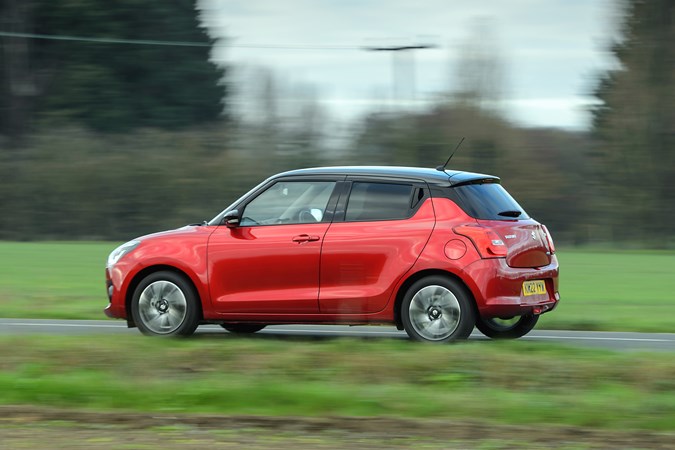
Build quality feels first-rate, although admittedly some of the plastics feel harder to the touch than you’ll find in some rivals. But they should at least be durable.
It’s a similar situation with switchgear. All the buttons and controls feel as though they’re built to last, but they do so without the satisfying damping action you find in other superminis.
Mechanically there’s nothing all-new for the Swift with all the engines and transmissions already seeing service elsewhere in Suzuki’s range.
Ongoing running costs
| Road tax | £190 |
|---|---|
| Insurance group | 19 - 27 |
Get an insurance quote with

|
|



